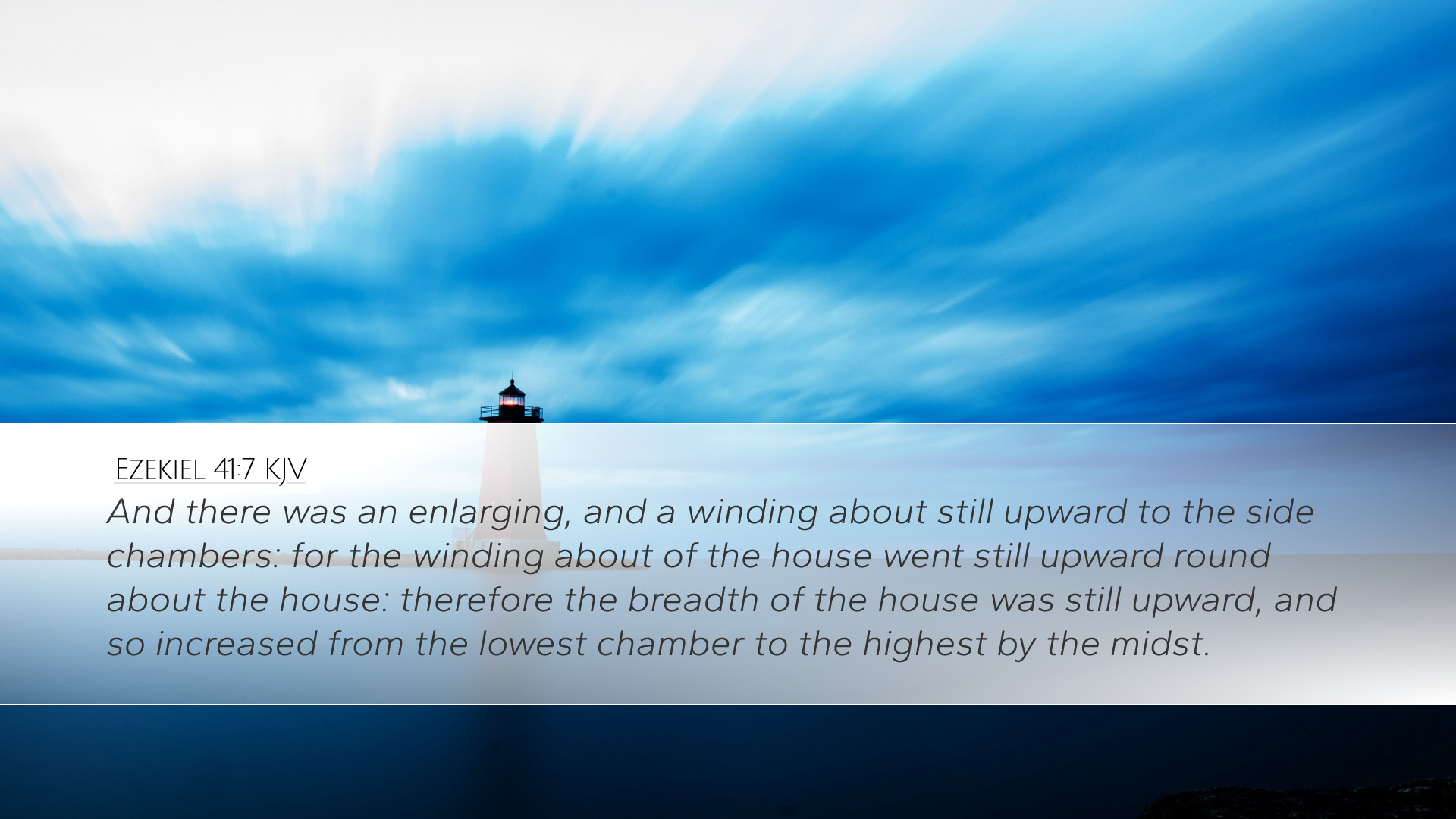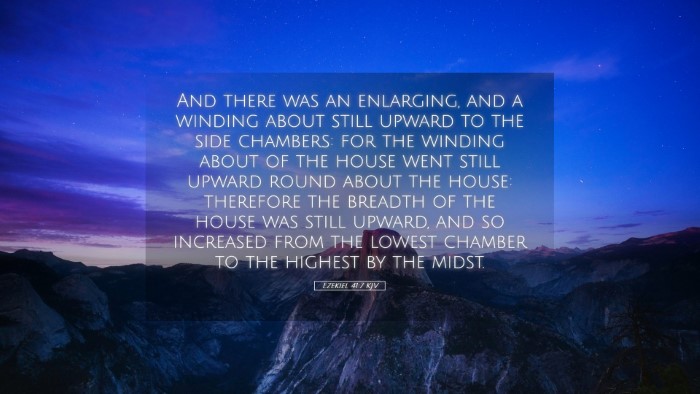Ezekiel 41:7 Commentary
Scripture Reference: Ezekiel 41:7 (KJV) - "And there was a wall around without, the temple; within the measure of the wall, there were chambers and the chambers were the rooms of the priests and the sacrifices were made there."
Introduction
This verse, found in the prophetic vision of Ezekiel, describes the architectural layout of the temple, emphasizing the spiritual significance behind such design. It reveals the importance of sanctity, order, and divine purpose in worship.
Architectural Details
Matthew Henry notes that the architectural features point to both a literal and figurative understanding of God's dwelling with His people. The walls serve not only as physical barriers but as symbols of separation between the sacred and the profane.
Albert Barnes elaborates on the structural arrangements within the temple precinct, indicating that the chambers were specifically designated for the priests. This denotes an organized approach to worship and sacrifice, revealing the necessity of holiness in the service of God.
Adam Clarke provides insight into the twelve chambers mentioned in Ezekiel, suggesting they symbolize a divine provision for those serving within the temple. The chambers are a representation of sustenance and support for the priestly duties, showing the care God has for those who lead His people in worship.
Spiritual Significance
The wall surrounding the temple denotes a protective measure, indicating the sacredness of God's presence. Matthew Henry mentions that God takes careful steps to ensure His holiness is not compromised, highlighting the need for boundaries in our approach to the divine.
Albert Barnes discusses the chambers as places of preparation and service, linking them to the spiritual preparation necessary before approaching God. This leads to discussions on the importance of being spiritually equipped before engaging in ministry.
The Role of the Priests
In considering the layout's implications, we must reflect on the role of the priesthood. Adam Clarke asserts that the chambers for the priests signify a space dedicated not only to their rest but also to their spiritual rejuvenation. This is essential for maintaining their focus on God and the duties they are entrusted to carry out.
The Call to Holiness
Henry emphasizes the call to holiness for those serving in the temple, illustrating how their physical surroundings reflect their spiritual condition. Being constantly in the presence of God requires a lifestyle marked by sanctification and dedication.
The Connection Between Structure and Worship
The intricate details of the temple structure emphasized by Barnes serve as a reminder of how physical space can influence spiritual experience. The manner in which the chambers are constructed reflects an intention for worship that is orderly and reverent.
Adam Clarke posits that the design enables the priests to fulfill their roles effectively, echoing the notion that our environments should foster spiritual growth and readiness. Each aspect of the temple reinforces the idea that worship is not merely a ritual but an encounter with the divine.
Practical Application for Today's Church
Bringing the insights from Ezekiel 41:7 into the context of modern worship, we observe the necessity of preserving space meant for spiritual activities. Just as God provided for His priests through designated areas, the church today should likewise create environments that are conducive to worship and reflection.
- Cultivating Sacred Spaces: Churches are encouraged to design their worship spaces intentionally, reflecting God's holiness and preparing hearts for His presence.
- Emphasizing the Role of Leaders: Just as the priests had their chambers, church leaders must be provided the resources and environments they need to lead effectively.
- A Call to Reverence: Congregations must strive to approach God with the same reverence and order exemplified in the temple's design.
Conclusion
Ezekiel 41:7 is not merely an architectural description but a profound commentary on the nature of God's presence among His people. By studying this verse alongside insights from public domain commentaries, we glean valuable lessons about holiness, preparation, and the significance of our worship environments.
The message is timeless: God desires to dwell among His people in a manner that honors His holiness, and it is our responsibility to create spaces and lives that reflect this divine purpose.


